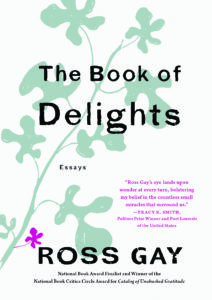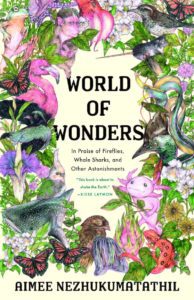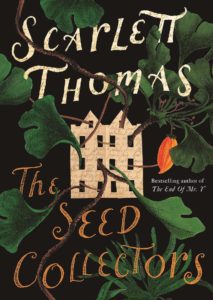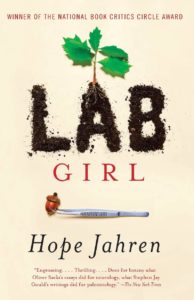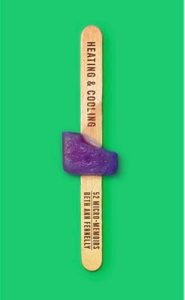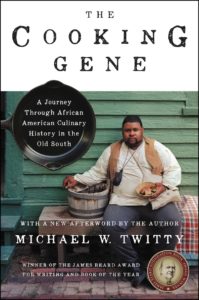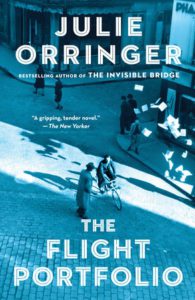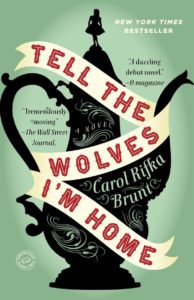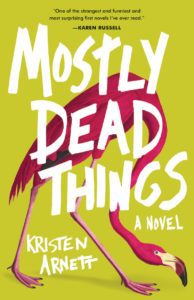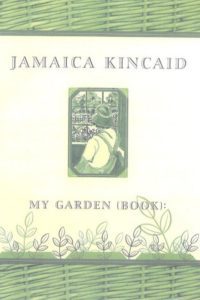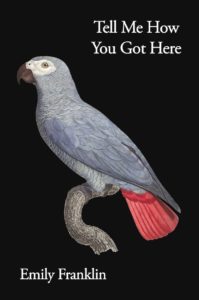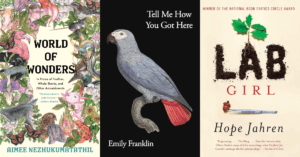
While the shortest day of the year is behind us, the month of February can feel like a long, dark day that stretches on interminably. This is the time of year I trek outside with my 140-pound dog for hurried walks, the time of year when I feel like a toddler, wanting my meals early and my pajamas on as soon as it’s dark. We are nearly a year into a worldwide pandemic that continues to rage and wreak havoc on our bodies, on our mental health, and our livelihoods. Isolation is ever-present, and in a year filled with protest, civil unrest, and the need for community and solace, turning to books—nonfiction, poetry, and novels—feels right.
I never thought I would grow food or flowers—I worked as a cook and appreciated flowers but had no space or time, with work and four kids to attend to, to keep plants alive. But over the past few years I have tried to learn about soil from my farmer uncle, about how to companion plant from various books and on-line resources. Gardening is the ultimate act of hope, my grandmother used to tell me. She died last year but passed along her gardening journals (and her foul mouth) to me. As a new gardener, I have reveled in the act of planting, of pushing seeds into dirt in just about every container I could rustle up. Part of the hopefulness my grandmother talked about is in the discomfort of not knowing how things will turn out—some tatsoi will grow, some carrots will not, some sun gold tomatoes will produce long into the autumn and some Brandywine will be ravaged by horrific finger-sized green worms with teeth.
I’ve never been someone who handled not knowing very well—I like facts and details and diagnoses—and yet the joy of writing, for me, is in the discovery. This year has been a struggle to become more comfortable with uncertainty. Gardening is a daily discovery—what grew or failed overnight, what might be revived by old coffee grounds or kitchen compost. Like writing, gardening offers endless opportunities for discovery.
The books in this list are not exclusively about plants or vegetables or nature. But, they are all about growth—in the ground or in the heart. There is hope in these pages, and hope to be found outside this spring; we just need to get through these dark weeks and press on, into the warmer air when we can get together again outside, once again able to marvel at the world rather than feel trapped or devastated by it. The best part of growing for me has been sharing the harvest—tomatoes made into smoky jam or sauce, squash baked into casseroles for my immunocompromised dad, jam made from foraged mixed berries. In the late fall, I harvested my own seeds, and gave them as gifts to friends and colleagues, hoping that while we have this dark, fallow time now, we—and our gardens or windowsills—might be connected come April and May—ready to overturn soil and the systemic issues in this country.
This collection of books, like the seeds I dispersed, will hopefully be a tide-me-over until we can all head back outside, together.
***
The Book of Delights: Essays by Ross Gay
Ross Gay’s The Book of Delights is a must for anyone struggling to find light or joy. Known for his poetry, Gay’s “essayettes,” as he calls them, read to me like daily psalms without religion. Delight, Gay suggests, is in noticing—and believing in—the magic of daily life. The book is comprised of easy-to-digest story morsels written over the course of a year. Gay might write about a pop song by El DeBarge on one page and on the next describe his annoyance at people going the wrong way around a restaurant buffet (remember restaurant buffets?!). In few words, Ross Gay writes about his world—his garden woes, his work, his struggles as a person of color in America. With nuance, insight, and humor, these chapters bring solace and wonder, even on the days that leave us aching. If you find yourself distracted these days, this book will remind you of the delight in reading. I read one essay each day as a form of morning meditation.
World of Wonders: In Praise of Fireflies, Whale Sharks, and Astonishments by Aimee Nezhukumatathil
This genre-defying book is poet Aimee Nezhukumatathil’s brilliant mix of memoir and nature guide. As she recalls her childhood moving around various parts of the US, Nezhukumatathil uses a single animal or plant or natural phenomenon—the axolotl, the saguaro cactus, the potoo—as the anchor for each chapter. Her mother is from the Philippines and her father from southern India, and Nezhukumatathil “grew up wanting to blend in.” She is both outside the social groups she observes and inside the larger natural world. Taking us from her childhood to her own motherhood, Nezhukumatathil uses her keen poetic lens to describe not only a firefly’s mating system and life cycle, but the feelings around learning these details—feelings that connect us to wonder and inevitably, also lead to loss. After all, loss is a part of growth. Nezhukumatathil both brings the reader inside her own life and history and also into the realm of the natural world, leaving us to consider our own place within humanity and our environment.
The Seed Collectors by Scarlett Thomas
The first thing I can tell you about seed gathering is that it is addictive. If you like being outside but need to feel productive to do so, you can wander and collect dried pods or slip a dying flower head into your palm and feel as though you’ve accomplished something. Drying what you’ve found—garlic chive seeds, marigolds gone crusty, coneflowers now prickly—is satisfying and, when you give them or replant the seeds, both frugal and eco-friendly. The desire to gather and to collect lends itself to drama, and Scarlett Thomas’s novel The Seed Collectors harnesses the mystery of a family tree and the power of what seeds might offer. The plot centers around a quirky family whose matriarch has died, leaving to her offspring a collection of seed pods that hold either enlightenment or death within them. Thomas’s novel has elements of magical realism and characters struggling to make sense of themselves—both in the world and also within their family.
Lab Girl by Hope Jahren
Lab Girl follows scientist author Hope Jahren from research lab (her own in the present and her father’s in the past) to research site. Jahren’s memoir is as much about trees, their language, their complicated communication systems that allow them to “talk” to one another, as it is about Jahren’s understanding of herself as scientist, a worker, and a human who may—or may not—be as good at communication and as tender as the subjects she studies. “Every once in a while a plant gets an idea to make a new leaf that changes everything,” she writes. Jahren examines and explains the intricate ways plants, trees, seeds, and pasts are connected. Not only is the writing absorbing, it also gives us a nudge to get outside and look at nearby trees, if only to wonder, to try and hear their conversations.
Heating & Cooling: 52 Micro-Memoirs by Beth Ann Fennelly
Mississippi Poet Laureate Beth Ann Fennelly’s Heating & Cooling is both witty and wise. With brevity, she shares her past and present in entirely relatable ways. “Returning from Spring Break, Junior Year at Notre Dame—Swapped the rosary on my bedpost for Mardi Gras beads.” These brilliant bursts of story and observations range from one line to a couple of pages—each one a peek through the window into Fennelly’s life and history. Married to another writer, one micro memoir reads: “In every book my husband’s written, a character named Colin suffers a horrible death. This is because my boyfriend before I met my husband was named Colin. In addition to being named Colin, he was Scottish, and an architect. So you understand my husband’s feelings of inadequacy. My husband cannot build a tall building of many stories. He can only build *a* story, and then push Colin out of it.” Fennelly is funny and tender in these pages, inspiring this reader to think forward and back in my own life toward how I might share fifty-two small stories of myself.
The Cooking Gene: A Journey Through African American Culinary History in the Old South by Michael W. Twitty
I’ve been to a Zoom funeral every weekend for the past month. I suspect more will follow, and without the traditional Jewish shiva—a week during which relatives and friends come by with food and conversation—there is a gaping hole where community ought to be. Cooking for my family and for others has been a salve during this time. I am profoundly grateful that I have food, and I’ve found sharing it is the best form of self-care. Reading about food and cooking is almost as good, and I wholeheartedly recommend The Cooking Gene. Twitty traces his personal family history through food, as well as his culinary journey from ancestral Africa to the Southern United States, detailing everything from his mother’s apple crisp to the cymling squash he grew during years when money was scarce to Funeral Potato Salad. Twitty explores his genealogy, writing that “after a lifetime of being fascinated by what different people around the world ate, I wanted to know everything I could about the food of the populations with whom I shared genetic affinity.” He also digs deep into culinary and cultural history of slavery in Southern cooking. After you read his book, and it inspires you to get into the kitchen and cook hoecake or black-eyed pea hummus, give a listen to his TED talk on gastronomy and the social justice reality of food. Perhaps you will make a dish or two, and share it.
Less by Andrew Sean Greer
I miss travel. Usually, in this between-time of year, I attend a writing conference in some American city, and find myself doubled over laughing with my group of dear, weird, quick-talking writer friends. I miss that laughter even more than I miss trying new foods in new cities. One novel that provides both laughs and the curiosity required to turn pages is Less by Andrew Sean Greer. There’s good reason why Greer won the Pulitzer for this book. Just before his fiftieth birthday, failing writer Arthur Less travels the world trying to escape his heartache. He writes that “the trick is not to fall in love”—because love presents complications—but Andrew Sean Greer is a master at creating characters and situations that could be so outlandish that they would alienate readers but instead, they are hilariously relatable (who hasn’t felt too old to be a particular club or party? Who hasn’t imagined being reckless with their own heart while abroad?) and engrossing. This year especially, it is great fun to follow a writer writing about a writer as they travel from New York to India to Germany to Morocco, trying to avoid love but ultimately coming to understand that no amount of travel can separate us from ourselves.
The Flight Portfolio by Julie Orringer
The Flight Portfolio is plotted liked a spy novel, with secrets and twists, yet is at its heart a literary struggle about what—and whom—society values. The story centers on Varian Fry, sent to Europe to try and save art, and its makers, during World War II. Based on real events, the novel details the rescuing of people like Chagall. Orringer offers insight into the deeply troubling choices people made while triaging human life during the war. A compulsive historic read.
Tell the Wolves I’m Home by Carol Rifka Brunt
Carol Rifka Brunt’s Tell the Wolves I’m Home is stunning and immediately engrossing. In 1987, when fourteen-year old June’s beloved Uncle Finn dies, she is bereft. He’s the one person who understood her. June’s family refuses to address the issues surrounding his death from AIDS, and so she keeps her new friendship with Toby, Finn’s partner, a secret. This is gorgeous writing and a perfect portrayal of two lonely people finding comfort in each other. June ages on the page with grace and loss, the kind of growth rarely accomplished so fully in teenaged characters.
Mostly Dead Things by Kristen Arnett
This novel is both alive on the page and disturbingly dead in its subject matter. Jessa-Lynn is dealing with her father’s death (from suicide) and the business he left behind (taxidermy). With humor and heart, Arnett explores what it means to be alive: “We were collectors, dismantlers, and artisans. We pieced together life from the remnants of death.” Jessa-Lynn not only pieces together animals—and her father’s memory—but her existing family, too. This is a dark and delirious novel that will reel you in from page one.
My Garden (Book) by Jamaica Kincaid
This book is at once a memoir, a catalog of growing (both plants and humans), and a gardening notebook someone left out for us to discover on a cold, dark day in pre-spring. Born in the West Indies and living in Vermont, Kincaid begins this rambling book with the decision to buy a historic New England house. From there, the narrative meanders to her childhood in Antigua and back to Vermont where she is determined to grow flowers and plants. She writes about everything in the garden there being from somewhere else—poinsettia from Mexico, bird of paradise from southern Africa, Norfolk pines from the South Pacific and her most-loathed food, breadfruit. Kincaid writes about slavery, about which roses to buy from which grower, about traveling to China to collect seeds. She is opinionated about roses, about weather, about color, about other gardeners, and she is loving when describing the act of seed collecting and about missing her children (and her flowers). There is gardening information in these pages alongside Kincaid’s personal story, as well as universal feelings. She writes that “an integral part of a gardener’s personality… is made up of the sentiment expressed by the two words ‘To Come.’”
And to close out this wonderful list, we just had to include Emily’s debut poetry collection, Tell Me How You Got Here, out now from Terrapin Books! – Ed.
Tell Me How You Got Here by Emily Franklin
“In Tell Me How You Got Here, Emily Franklin explores memory, motherhood, loss, and the ways objects—and bodies—may be haunted by the history they carry. The poems are as smart and provocative as they are tender, inviting the reader to ask difficult questions: What can we call ours? What do we lay claim to that can’t possibly belong to us? How might we live with the past rather than try to erase it? Tell Me How You Got Here is an astonishing collection.” – Maggie Smith, author of Good Bones and Keep Moving

